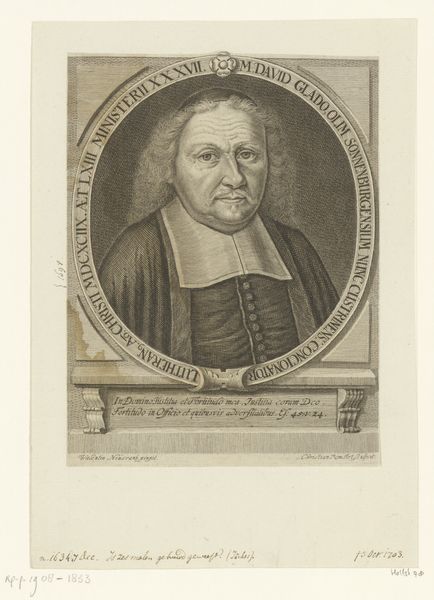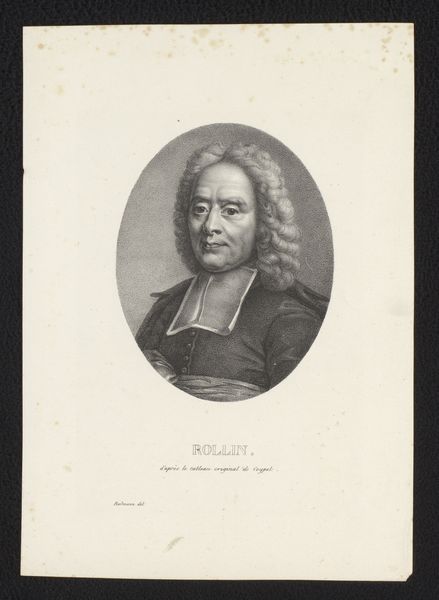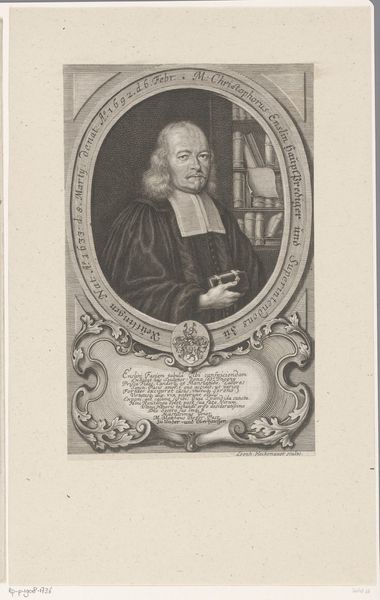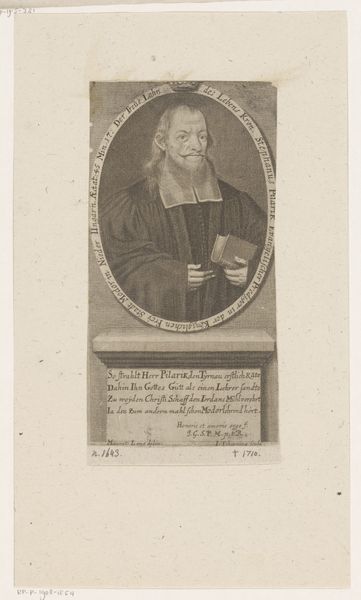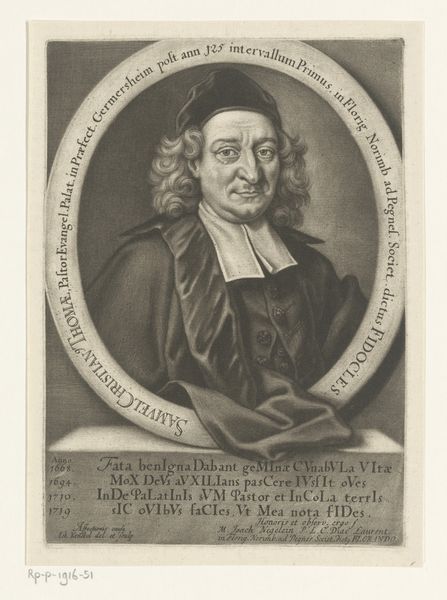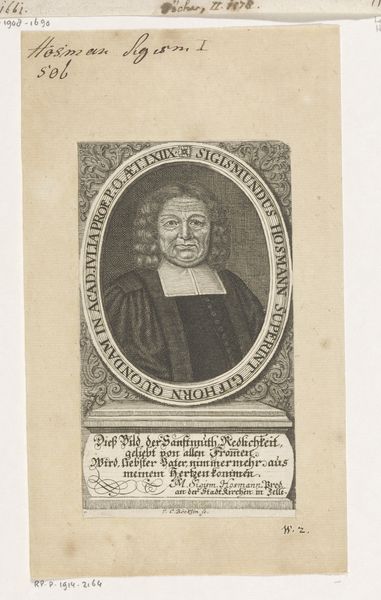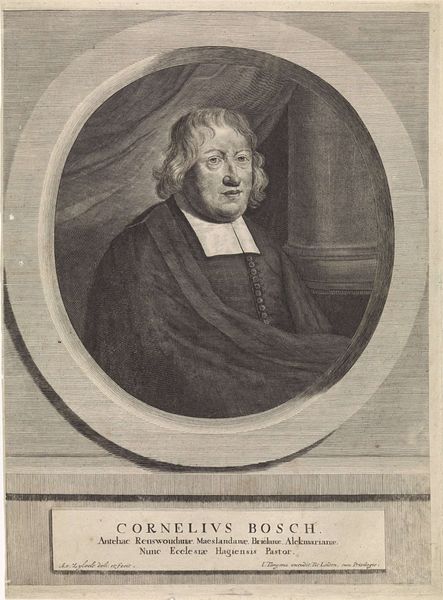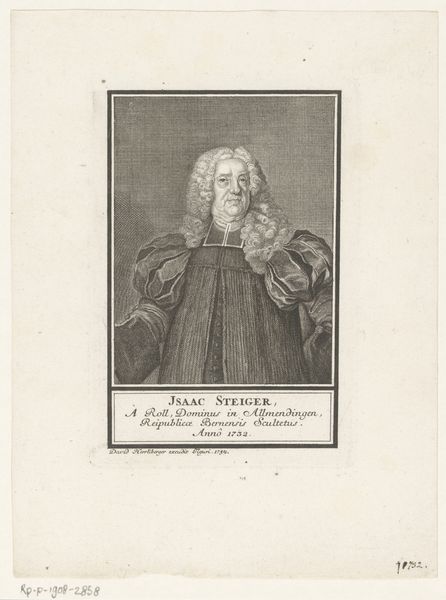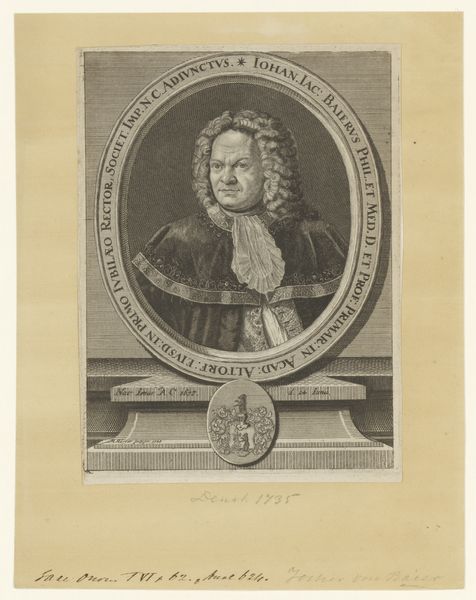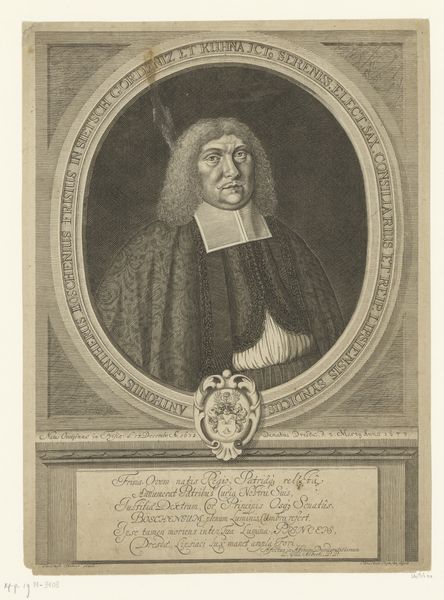
print, engraving
#
neoclacissism
# print
#
engraving
#
realism
Dimensions: width 293 mm, height 222 mm
Copyright: Rijks Museum: Open Domain
Curator: Before us, we have a print from 1827 entitled "Portret van Johannes Jaenicke" by G.W. Lehmann. It’s an engraving, portraying a man with a serene expression. What's your immediate take on this piece? Editor: I'm struck by the textural contrast. The smooth planes of his face against the intricately rendered details of his hair and clothing – it creates a dynamic visual tension. It almost seems like he's emerging from a sea of fabric and detail. Curator: Absolutely. Lehmann captured Johannes Jaenicke, a preacher in Berlin. These prints were often commissioned to commemorate prominent figures. Note how this image circulates notions of religious authority and bourgeois dignity in 19th-century Prussian society. Editor: Yes, and I’m captivated by how Lehmann achieved such subtle gradations of tone solely through the precision of his lines. Look at the shading around the eyes, the way it models the form so convincingly. It's masterfully executed, a testament to the engraver’s skill. Curator: Beyond artistic prowess, portraits like these had a public function. They disseminated Jaenicke's image, reinforcing his social standing and religious influence. Prints offered wider accessibility to portraits that were initially reserved for elites, thereby democratizing imagery. Editor: You know, the composition is deceptive in its simplicity. The octagonal border, while unconventional, focuses the viewer entirely on Jaenicke's face. This constraint pushes the realism within the portrait. Curator: Indeed, that geometric frame imposes an order reflective of the Neoclassical ideals dominant at the time. It encapsulates the sitter and offers legibility of who had access and control to disseminate knowledge in those periods. Editor: Seeing the stippling, hatching and cross-hatching, one is reminded of the labour-intensive process required to produce the multiple plates and prints necessary to convey a representational painting to wider audience. Curator: A point well taken; so in contemplating this print, one may reflect on how this image functioned not just as a representation but as an active participant in the social fabric of its time. Editor: Agreed; it pushes one to consider the technical virtuosity, aesthetic refinement, and cultural positioning embedded within this print that extends its life beyond its original creation.
Comments
No comments
Be the first to comment and join the conversation on the ultimate creative platform.
